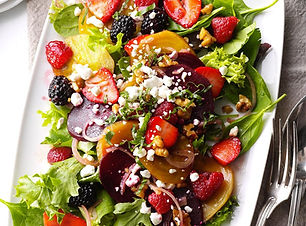

WALNUTS
Scientific Name: Juglans regia
Common Varieties: Chandler, Hartley, Howard, Serr, Tulare, Vina

Crop Information
It’s a long road from planting a walnut orchard to delivering fresh, delicious walnuts to your local market. Each step in the process from propagation, to harvest, to packer, and finally to market is handled with care and attention. There are over 4,000+ walnut growers, a large majority being family farms, many of which have been in the walnut business for several generations.
Walnut production takes commitment and patience, and orchards are dedicated only to walnut production. After a walnut sapling is planted, it takes five to seven years for it to grow into an adult tree suitable for harvesting. Although many varieties of walnuts are grown in California, six varieties account for over 85%: Chandler, Hartley, Howard, Tulare, Serr, and Vina.

Grower Practices
Growers consider soil and water conditions, fertility, and pest pressures to decide economically viable growing practices.
Growers do not allow nuts to become water stressed. This will lead to lower weight, and obviously, lower returns.
Early harvest spray (ethephon) can be used; make sure to apply when the packing tissue of ALL NUTS turns just brown. Applying the spray too early will cause the nuts to not reach full development. During harvest,
timing is everything. Keep an eye on the weather. Harvesting at the hottest part of the day will cause nuts to stain while harvesting around rainy weather will cause mold development.
The earlier the harvest, the lighter the kernel. Nuts left too long on the tree will develop a darker color.
Clean orchard = clean nuts! Keeping the orchard floor clear will reduce foreign material in the nuts and will produce a better quality nut for returns. After harvest, get the nuts off the floor and to a huller/dehydrator as soon as possible. This will prevent any quality problems from setting in as well as prevent potential theft, a growing problem in last few years.

County Statistics
Bearing Acreage: 75,100
Yield Per Acre: 2.08 Tons / Acre
Total Tons: 156,000 Tons
Gross Total Value: $221,926,000
Data Source: San Joaquin County Crop Report, 2020. https://www.sjgov.org/WorkArea//DownloadAsset.aspx?id=33165
Added Value: Essential Food Production, Essential Worker Employment, Education, Research

Recipe
Berry Beet Salad
Ingredients
1 each fresh red and golden beets
1/4 cup balsamic vinegar
2 tablespoons walnut oil
1 teaspoon honey
Dash salt
Dash pepper
1/2 cup sliced fresh strawberries
1/2 cup fresh raspberries
1/2 cup fresh blackberries
3 tablespoons chopped walnuts, toasted
1 shallot, thinly sliced
4 cups torn mixed salad greens
1 ounce fresh goat cheese, crumbled
1 tablespoon fresh basil, thinly sliced
Directions
-
Place beets in an 8-in. square baking dish; add 1 in. of water. Cover and bake at 400° for 30-40 minutes or until tender.
-
Meanwhile, in a small bowl, whisk the vinegar, oil, honey, salt and pepper; set aside. Cool beets; peel and cut into thin slices.
-
In a large bowl, combine the beets, berries, walnuts and shallot. Pour dressing over beet mixture and toss gently to coat. Divide salad greens among 4 serving plates. Top with beet mixture; sprinkle with cheese and basil.
Recipe Source: https://www.tasteofhome.com/recipes/berry-beet-salad/


